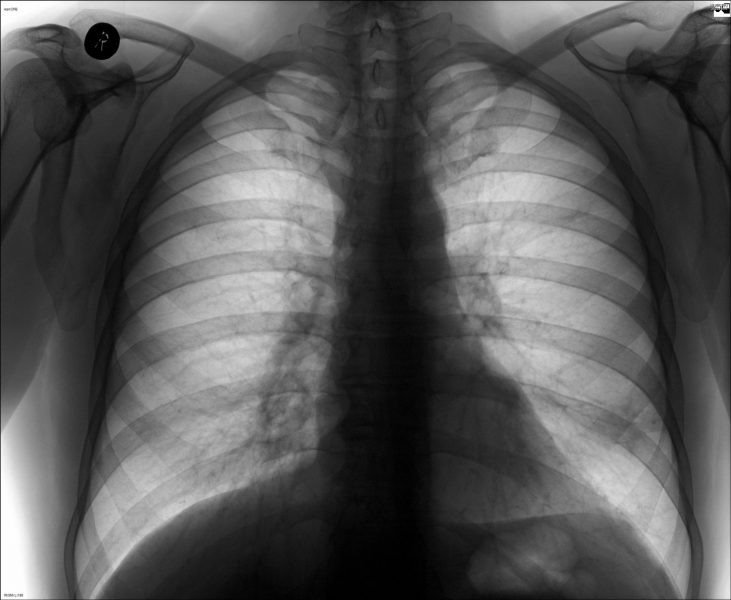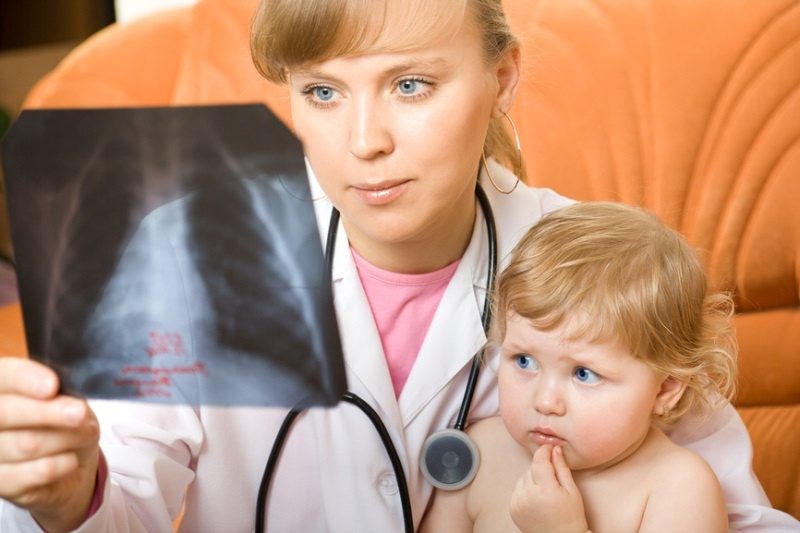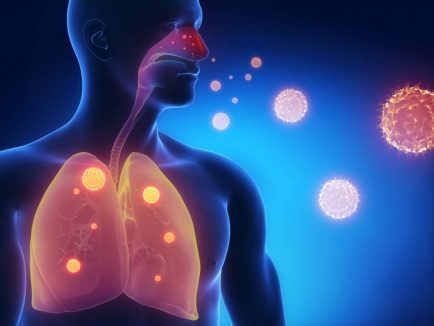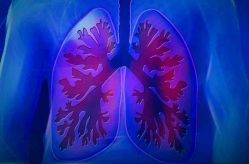Despite modern developments in the field of medicine and the emergence of new antibacterial drugs, mortality from pneumonia is increasing. Most people fear this disease. Consider how pneumonia is transmitted and whether it is worth fearing.
Material Content:
Ways of infection with pneumonia and risk group
Pneumonia is an acute pneumonia that occurs on its own or as a result of a complication of another disease. It is characterized by damage to the vascular system of the lungs, alveoli and bronchioles.
 The risk group for pneumonia includes:
The risk group for pneumonia includes:
- Elderly people.
- Holders of weak immunity.
- Patients with heart failure.
- Persons with a history of chronic lung disease.
- Patients who have recently undergone abdominal surgery.
- People injured in the chest.
The cause of the disease can be bacteria, viruses or fungi.
The causative agent penetrates into the lung tissue in several ways.
Ways of contracting pneumonia:
• Airborne droplets. It is the most common. With coughing or sneezing, the patient secretes a large number of microbes. A person at risk can become infected with pneumonia by breathing in air that is saturated with pathogens.
• Through the circulatory system. This route of infection is not so common. Pathogenic microbes enter the circulatory system from the primary focus of infection. This is possible with sepsis.
• By the lymphatic system.It is extremely rare. The causative agent penetrates the lymphatic system and spreads with lymph throughout the body.
Additional factors are vitamin deficiency, hypothermia, smoking, alcoholism.
Is the disease contagious to those around you?
Many are afraid of pneumonia, because they do not know whether pneumonia is contagious or not. In the case of transmission, much depends on the coincidence of several factors. It is important which pathogen caused the disease, who is sick, how long and in what form you can be in contact with a patient with pneumonia.
There is a small risk of contracting pneumonia. Children and adults with weak immunity are more susceptible to pathogens. Lying patients are usually more prone to pneumonia, because they have stagnant mucus in the airways. The causative agent accumulates in sputum, and getting into the lungs with it, begins to multiply there intensively.
Pneumonia can be transmitted from one person to another if it is caused by a virus, staphylococcus, streptococcus, pneumococcus or legionella.
Nevertheless, in most cases, pneumonia is not contagious, since pneumonia rarely begins as an independent disease. Most often, it develops against a background of concomitant infections.
Is it possible to get airborne droplets
The danger of infection is not the disease itself, but the microorganisms that caused it. There are certain forms of pneumonia, the causative agent of which can penetrate the body by airborne droplets.
If infectious pneumonia occurs, then there is a risk of contracting not as a result of pneumonia, but because of a viral infection.
The following forms of pneumonia are distinguished, which are transmitted by airborne droplets:
- Atypical pneumonia. Caused by various pathogens. Symptoms are erased, similar to SARS. It is difficult to treat with antibiotics.
- Caseous pneumonia. It proceeds lightning fast, the symptoms increase within three days. Quickly affects lung tissue, resulting in pulmonary parenchyma necrosis. Without adequate treatment leads to acute respiratory failure and death of the patient.
These types of pneumonia are extremely dangerous, but are quite rare. In this case, in order to become infected, you need to be in constant and close contact with the patient.
Types and classification of pneumonia
By the type of pathogen, there are such types of pneumonia:
- Bacterial It is caused by various bacteria: staphylococci, streptococci, hemophilic bacillus, chlamydia, mycoplasma.
- Fungal. The causative agents of this type of pneumonia are more often fungi of the genus Candida, less often aspergillus.
- Viral Here, various types of viruses act as carriers: adenoviruses, rhinoviruses, respiratory syncytial and influenza viruses.
- Mixed. Called by several microorganisms simultaneously.
Depending on the nature of the localization of inflammation, pneumonia is divided as follows:
- Segmented or polysegmented. The focus of infection is localized in one or more segments of the lungs.
- Fractional. Inflammation occurs in a specific pulmonary lobe.
- Focal. The lesion is formed in a limited area of the lung.
- Total, subtotal. The process covers all the lungs completely.
- Left or right. It affects the left or right lung.
- Bilateral. An inflammatory process occurs in both lungs.
- Basal. The focus of infection develops at the roots of the lungs.
According to the form of the disease:
- Hospital pneumonia Inflammation that began in the hospital no earlier than 2 days after the hospitalization of the patient.
- Community-acquired. Inflammation that began before the patient went to the doctor and no later than 2 days after the patient was placed in the department.
- Aspiration. Occurs after ingestion of gastric contents in the respiratory tract.
- Pneumonia in HIV patients. Inflammation occurs in people with immunodeficiency.
By severity:
- Easy degree. It is characterized by small foci of lung damage. Easy to treat.
- Medium degree. An intoxication of the body appears, the process affects large foci of the lungs.
- Severe degree. Severe intoxication, acute respiratory failure develops.
It is very important to correctly determine the type of disease before prescribing complex therapy.
Symptoms and signs in adults and children
The main signs of pneumonia can be classified into symptoms that occur in adulthood and childhood.
Symptoms of Infectious Pneumonia in Adults
The first signs of the disease are hyperthermia, chills, weakness, severe cough, headache, tightness and pain in the chest (usually on the affected side), shortness of breath.
Signs of pneumonia in children
It usually begins 5-7 days after a viral infection. A fever rises, at the beginning of the disease a dry cough or with sputum difficult to separate, shortness of breath, hoarseness of the voice. In children, general intoxication of the body is more pronounced than in adults.
 It is manifested by general weakness, refusal to eat, vomiting, pallor of the skin. Parents may notice that the affected side of the chest in the child is breathless.
It is manifested by general weakness, refusal to eat, vomiting, pallor of the skin. Parents may notice that the affected side of the chest in the child is breathless.
When listening, wet or dry wheezing in the lungs, hard weakened breathing are heard.
In a blood test in patients with pneumonia, high leukocytosis and ESR are detected. On radiography of the lungs, the darkening of the affected area is clearly visible.
Pneumonia is treated in a hospital. For therapy, antibiotics, expectorants, mucolytic agents, bronchodilators, infusion therapy are used. Both children and adults after normalization of body temperature are shown physiotherapy and massage.
Recovery occurs within two to three weeks after the onset of the disease. A large amount of sputum begins to separate, it becomes more fluid, and residual moist rales are heard when listening.
Preventive measures
To reduce the risk of pneumonia, viral infections should be treated in a timely manner. During the period of rising incidence, avoid public places with a large crowd of people, observe personal hygiene, and often ventilate living quarters.
Pneumonia is a rather dangerous disease. Therefore, you should be careful about the slightest signs associated with the development of the disease.
Proper prevention, timely access to a doctor and strict adherence to all the instructions of a specialist will help eliminate the risk of complications and will contribute to a speedy recovery.















